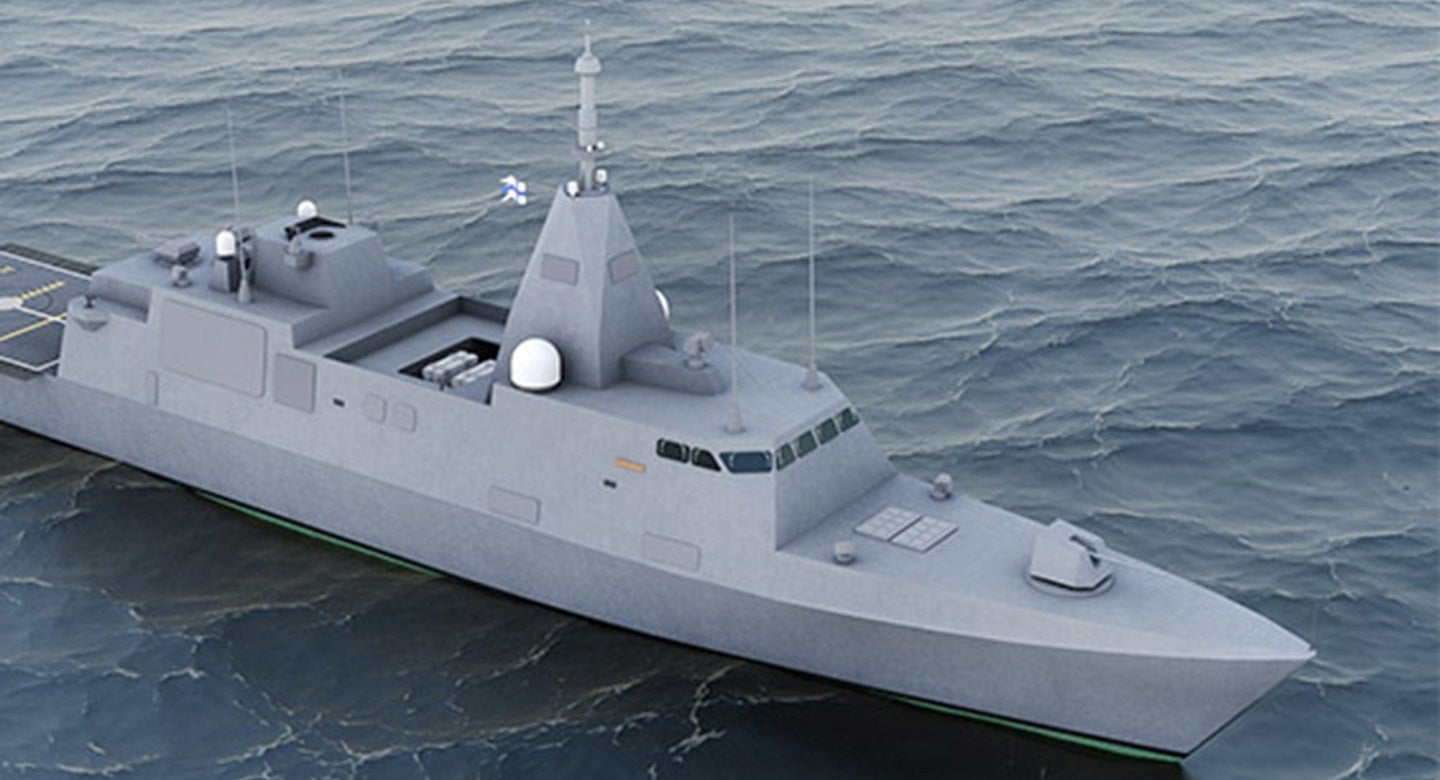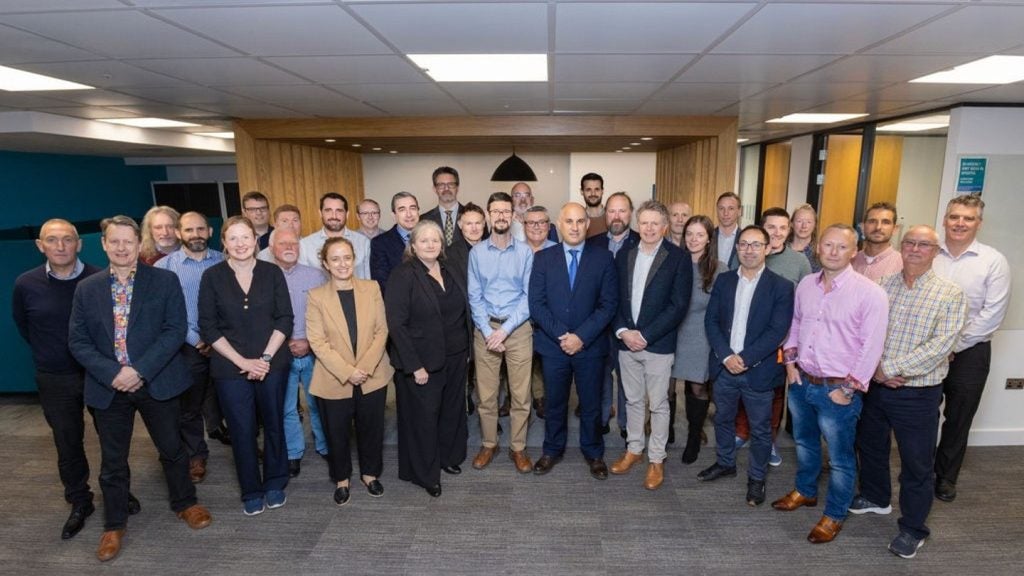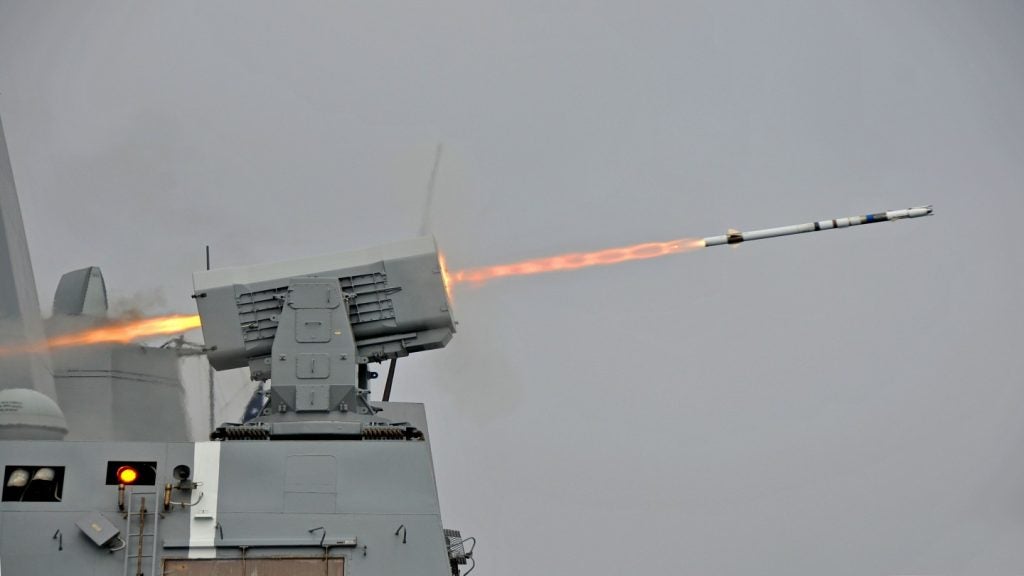
Finland’s naval manufacturer Rauma Marine Constructions (RMC) celebrated the steel-cutting of the country’s first Pohjanmaa-class corvette on 30 October.
This marks the start of the construction phase of the €1.23bn ($1.36bn) ‘Squadron 2020’ programme to replace the Finnish Navy’s legacy seven-ship fleet.
Finland’s Defence Forces Logistics Command signed the shipbuilding contract with RMC for four Pohjanmaa-class corvettes in September 2019.
According to Finland’s MoD, construction will continue until 2029. In April, the Government issued a call for technical experts to join the build, citing “delays in the initial build phase” of the project. The first-in-class vessel is planned to be operational by 2027.
As the Finnish Border Guard and Navy are upgrading their primary surface fleet, naval vessels and surface combatants form the second-largest sector in the Finnish defence market. The total value for this sector is $1.2bn in 2023-28, GlobalData intelligence indicates. Value allocation across the forecast period is predicted to peak in 2025 at $285m.
Features of the Pohjanmaa-class
With a length of 117 metres (m), width of 16m and a draught of 5m, the first Pohjanmaa corvette will be able to carry 70 servicepeople. The vessel can also reach a speed of 25 knots (48km/h).
How well do you really know your competitors?
Access the most comprehensive Company Profiles on the market, powered by GlobalData. Save hours of research. Gain competitive edge.

Thank you!
Your download email will arrive shortly
Not ready to buy yet? Download a free sample
We are confident about the unique quality of our Company Profiles. However, we want you to make the most beneficial decision for your business, so we offer a free sample that you can download by submitting the below form
By GlobalData“The design of the corvettes pays particular attention to shock resistance, noise levels and stealth technology,” says Timo Ståhlhammar, Commodore (ret.) and Project Director at RMC.
“The multi-role corvettes are the first vessel class in the Finnish Navy that are designed and constructed under the surveillance of the ship classification society, including the ship’s performance in ice.”
RMC designed Finland’s four corvettes to operate in the Baltic Sea year-round in various circumstances ranging from autumn storms to icy and freezing conditions.
The Pohjanmaa-class is equipped with monitoring capacities for air, surface and underwater surveillance. They are also capable of laying navy mines, performing defence actions against surface vessels, submarines and various airborne targets and conducting maritime operations. In addition to domestic operations, the vessels can be used in crisis management measures and as part of Nato’s Standing Naval Forces.
The open architecture of the Saab 9LV combat management system will enable the integration of third-party sensors, armament and systems, allowing Finland’s Navy to interoperate more closely with its Nato partners since the country joined the alliance earlier this year.
Special investment in the lead up to construction
The corvettes will be constructed in a new multi-purpose hall that has been built specifically for this project. The hall will provide excellent conditions for production and will guarantee security and quality.
RMC has also made significant investments in steel production, which will allow for the welding of even thinner plates.
Furthermore, RMC has constructed a prototype of the vessel to determine the technical production capacity of the project. This has been done to ensure that the investments are suitable to produce military vessels, to confirm dimensional and form accuracy, to verify the planned practices and to test technical solutions for various appliances and materials.







